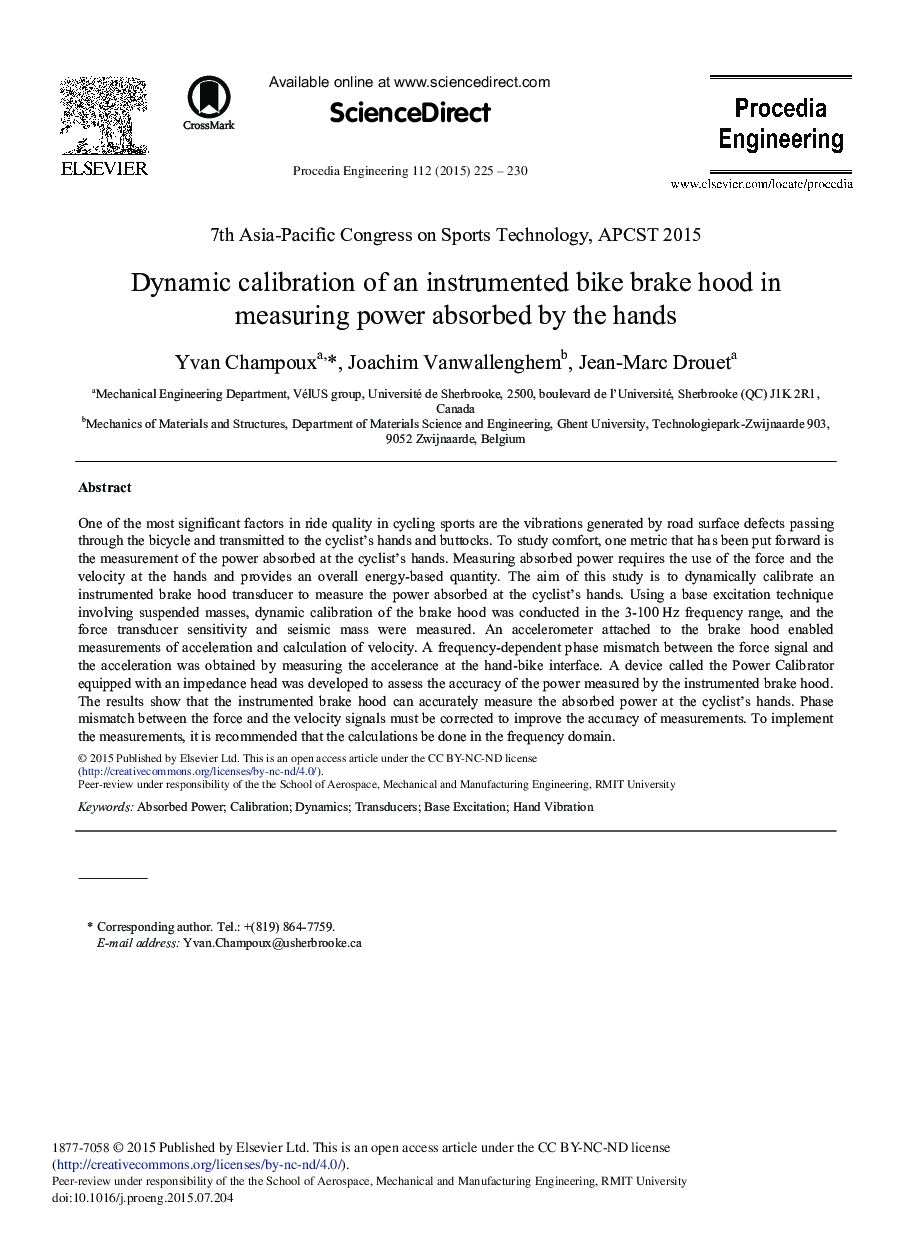| کد مقاله | کد نشریه | سال انتشار | مقاله انگلیسی | نسخه تمام متن |
|---|---|---|---|---|
| 855810 | 1470714 | 2015 | 6 صفحه PDF | دانلود رایگان |
One of the most significant factors in ride quality in cycling sports are the vibrations generated by road surface defects passing through the bicycle and transmitted to the cyclist's hands and buttocks. To study comfort, one metric that has been put forward is the measurement of the power absorbed at the cyclist's hands. Measuring absorbed power requires the use of the force and the velocity at the hands and provides an overall energy-based quantity. The aim of this study is to dynamically calibrate an instrumented brake hood transducer to measure the power absorbed at the cyclist's hands. Using a base excitation technique involving suspended masses, dynamic calibration of the brake hood was conducted in the 3-100 Hz frequency range, and the force transducer sensitivity and seismic mass were measured. An accelerometer attached to the brake hood enabled measurements of acceleration and calculation of velocity. A frequency-dependent phase mismatch between the force signal and the acceleration was obtained by measuring the accelerance at the hand-bike interface. A device called the Power Calibrator equipped with an impedance head was developed to assess the accuracy of the power measured by the instrumented brake hood. The results show that the instrumented brake hood can accurately measure the absorbed power at the cyclist's hands. Phase mismatch between the force and the velocity signals must be corrected to improve the accuracy of measurements. To implement the measurements, it is recommended that the calculations be done in the frequency domain.
Journal: Procedia Engineering - Volume 112, 2015, Pages 225-230
